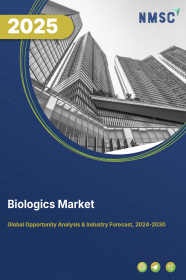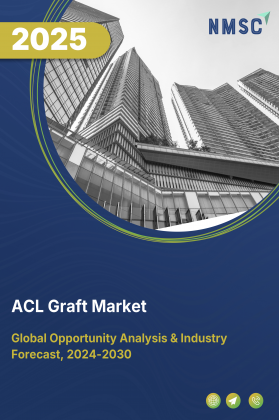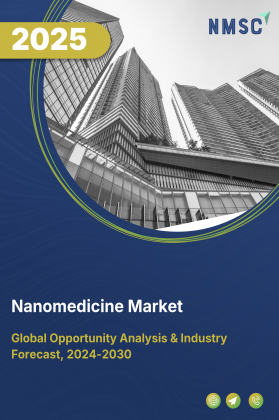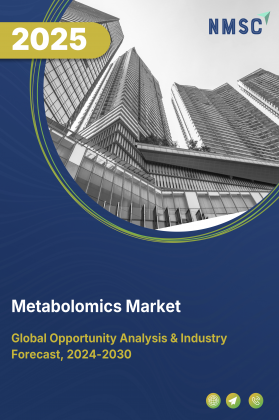
Biologics Market by Type (Therapeutic Proteins, Monoclonal MAbS, Vaccines, Antisense, RNAi, & Molecular Therapy, and Others), by Manufacturing Capabilities (In-house and Outsourced), by Source (Microbial, Mammalian, and Others),by Drug Classification (Branded Drugs and Generic Drugs) - Global Opportunity Analysis and Industry Forecast, 2022–2030
Market Overview
The global Biologics Market size was valued at USD 322.80 billion in 2021 and is predicted to reach USD 689.59 billion by 2030, with a CAGR of 8.8% from 2022 to 2030. Biologics are also known as biological drugs. They are disease-modifying drugs made from living organisms or part of living organisms. These drugs are derived from humans, insects, birds, plants, and microorganisms. Biological drug products carry out the production of vital proteins and the modification of human hormones and cells.
Biologic drugs are administered by injection or infusion as they are proteins that can be quickly digested if given by mouth. Biologics have gained an immense response as they are essentially utilized to treat various types of diseases and conditions that include Crohn’s disease, ulcerative colitis, rheumatoid arthritis, and other autoimmune diseases.
Market Dynamics and Trends:
The demand for biologics is increasing due to growing incidences and diagnosis of chronic diseases such as heart diseases and diabetes. This, in turn, further raises the demand of medical drugs. For instance, in June 2021, the World Health Organization (WHO) announced that nearly about 17.9 million people died from cardiovascular diseases (CVDs) in 2019. Out of this, nearly 85% people died due to heart attack and stroke. The growing demand and high acceptability of innovative therapies such as immunotherapy and some targeted therapies that include biological response modifier therapy, biotherapy, and biologic response modifiers (BRM) therapy are expected to support the growth of the biologics market. Also, the introduction of novel biological drugs such as antibody drug conjugate (ADC) that are used in cancer treatment for their high efficacy drives the market growth.
Moreover, the growing number of cancer cases across the world drives the biologics market growth as biological therapy is used in the treatment of various types of cancers to prevent or slow down the tumor growth and prevent the spread of cancer. For instance, according to the statement released by WHO in February 2022, cancer is a leading cause of death worldwide, and accounted for about 10 million deaths in 2020.
However, high initial capital investment and risks of side effects associated with biologics such as chest pain, breathing problems, and gastrointestinal complications are some of the factors restraining the growth of the market. On the contrary, increasing demand for personalized medicine and rising use of biopharmaceuticals over chemically-produced molecules are expected to create ample opportunities for the market in the coming years.
Market Segmentations and Scope of the Study
The biologics market is segmented on the basis type, manufacturing capabilities, source, drug classification, route of administration, application, distributional channel, mode of purchase, and geography. On the basis of type, the market is segmented into therapeutic proteins, monoclonal antibodies, vaccines, Antisense, RNAi, & molecular therapy, and others. The therapeutic proteins segment is further classified into metabolic disorders therapeutic proteins, cancer therapeutic proteins, cardiovascular therapeutic proteins, immunological therapeutic proteins, and other therapeutic proteins. The monoclonal antibodies segment is further divided into anti-cancer, immunological, anti-infective monoclonal antibodies, neuropharmacological, cardiovascular and cerebrovascular, and others. The vaccine segment is sub-categorized into anti-infective vaccines, autoimmunity vaccines, and other vaccines. On the basis of manufacturing capabilities, the market is categorized into in-house and outsourced. On the basis of source, the market is further classified into microbial, mammalian, and others. On the basis of drug classification, the market is divided into branded drugs and generic drugs. On the basis of route of administration, the market is divided into oral and others. On the basis of application, the market is divided into hematologic disorders, infectious diseases, immunological disorders, oncology, cardiovascular disorders, and others. Based on distributional channel, the market is further segmented into retail pharmacies, hospital pharmacies, and online pharmacies. Based on mode of purchase, the market is divided into prescription drugs and OTC drugs. The geographical breakdown and analysis of each of the aforesaid segments include regions such as North America, Europe, Asia-Pacific, and RoW.
Geographical Analysis
North America holds the dominant share of the biologics market at present, and is expected to boost the market during the forecast period in this region. The availability of high-quality research infrastructure along with developments in immunotherapies, gene & cell therapies, and antibody drug conjugates are driving the market in this region. Also, biologic drugs are used in the treatment of autoimmune diseases comprising of various arthritis types such as spondylitis, rheumatoid, and psoriatic arthritis. This, in turn, drives the market growth.
Moreover, the presence of a large number of pharmaceutical companies that are engaged in the production of biologic drugs in the region is expected to drive the biologics market in the region. For instance, in February 2022, the Janssen Pharmaceutical Companies of Johnson & Johnson received the approval by the U.S. Food and Drug Administration (FDA) for the biological drug known as CARVYKTI. It is used for the treatment of adults with relapsed or refractory multiple myeloma. The drug CARVYKTI is a medicine made from white blood cells. These cells are genetically modified to recognize and attack the multiple myeloma cells.
On the other hand, Asia-Pacific is expected to show a swift rise in the market due to increasing biological approvals of various pharmaceutical companies present in the region. For instance, in October 2021, Cadila Pharmaceuticals launched two similar biologics products such as NuPTH and Cadalimab in the Indian market. NuPTH is a form of parathyroid hormone used to treat osteoporosis by promoting the formation of bone. Cadalimab is used for the treatment of rheumatoid arthritis and psoriatic arthritis.
Also, increase in prevalence of chronic diseases such as asthma, cancer, and diabetes in the region further raises the demand for the biological drugs. This, in turn, is expected to propel the demand of biologics market in this region. For instance, in 2021, according to World Bank, the average rate of China’s diabetic population between the age of 20 and 79 reported to be up to 10.6 million.
Competitive Landscape
Various market players operating in the biologics market include Biocon Biologics Ltd., Bristol-Myers Squibb Company (BMS), Merck & Co., Inc., Eli Lilly & Company, Merck Kgaa, Astrazeneca Plc, Novartis International AG, Pfizer, Inc., Amgen, Inc., and Moderna, Inc. These market players are adopting various product launches to maintain their dominance in the biologics market.
For instances, in September 2020, Biocon Biologics Ltd. and Mylan made an announcement about the launch of a biosimilar named Semglee in the U.S. This biosimilar is available in pre-filled pen and vials, and intended for controlling high blood pressure and type 2 diabetes in patients. Moreover, in September 2020, GlaxoSmithKline PLC (GSK) announced that the U.S. Food and Drug Administration (FDA) approved its Nucala, which the first and only biologic treatment available for Hypereosinophilic Syndrome (HES).
Key Benefits
-
The biologics market report provides the quantitative analysis of the current market and estimations from 2022 to 2030. This analysis assists in identifying the prevailing market opportunities to capitalize on.
-
The study comprises of a detailed analysis of the biologics market trends including the current and future trends for depicting the prevalent investment pockets in the market.
-
The information related to key drivers, restraints, and opportunities and their impact on the biologics market is provided in the report.
-
The competitive analysis of the market players along with their market share in the biologics market is mentioned.
-
The SWOT analysis and Porter’s Five Forces model are elaborated in the study.
-
The value chain analysis in the market study provides a clear picture of the stakeholders’ roles.
Key Market Segments
By Type
-
Therapeutic Proteins
-
Metabolic Disorders Therapeutic Proteins
-
Cancer Therapeutic Proteins
-
Cardiovascular Therapeutic Proteins
-
Immunological Therapeutic Proteins
-
Other Therapeutic Proteins
-
-
Monoclonal Antibodies (MAbS)
-
Anti-Cancer MAbs
-
Immunological MAbS
-
Anti-Infective Monoclonal Antibodies (MAbS)
-
Neuropharmacological MAbS
-
Cardiovascular and Cerebrovascular MAbS
-
Other MAbS
-
-
Vaccines
-
Anti-Infective Vaccines
-
Autoimmunity Vaccines
-
Others-Vaccines
-
-
Antisense, RNAi, & Molecular Therapy
-
Others
By Manufacturing Capabilities
-
In-House
-
Outsourced
By Drug Classification
-
Branded Drugs
-
Generic Drugs
By Source
-
Microbial
-
Mammalian
-
Others
By Route of Administration
-
Oral
-
Others (IV and IP)
By Application
-
Hematologic Disorders
-
Infectious Diseases
-
Immunological Disorders
-
Oncology
-
Cardiovascular Disorders
-
Others
By Distributional Channel
-
Hospital Pharmacies
-
Retail Pharmacies
-
Online Pharmacies
By Mode of Purchase
-
Prescription Drugs
-
Over-The-Counter (OTC) Drugs
By Geography
-
North America
-
The U.S.
-
Canada
-
Mexico
-
-
Europe
-
The U.K.
-
Germany
-
France
-
Italy
-
Spain
-
Russia
-
Sweden
-
Rest of Europe
-
-
Asia-Pacific
-
China
-
India
-
Japan
-
South Korea
-
Australia
-
Indonesia
-
Singapore
-
Rest of Asia-Pacific
-
-
RoW
-
UAE
-
Saudi Arabia
-
South Africa
-
Brazil
-
Israel
-
Turkey
-
Remaining Countries
-
Key Players
-
Bristol-Myers Squibb Company (BMS)
-
Merck & Co., Inc.
-
Eli Lilly & Company
-
Merck Kgaa
-
Astrazeneca Plc
-
Biocon Biologics Ltd.
-
Novartis International AG
-
Pfizer, Inc.
-
Amgen, Inc.
-
Moderna, Inc.
REPORT SCOPE AND SEGMENTATION:
|
Parameters |
Details |
|
Analysis Period |
2021–2030 |
|
Base Year Considered |
2021 |
|
Forecast Period |
2022–2030 |
|
Market Size Estimation |
Billion (USD) |
|
Market Segmentation |
By Type (Therapeutic Proteins, Monoclonal MAbS, Vaccines, Antisense, RNAi, & Molecular Therapy, and Others), by Manufacturing Capabilities (In-house and Outsourced), by Source (Microbial, Mammalian, and Others), by Route of Administration (Oral and Others), by Application (Hematologic Disorders, Infectious Diseases, Immunological Disorders, Oncology, Cardiovascular Disorders, and Others), by Distribution Channel (Hospital Pharmacies, Retail Pharmacies, and Online Pharmacies), and by Mode of Purchase (Prescription Drugs and OTC Drugs) |
|
Geographical Segmentation |
North America (U.S., Canada, Mexico) Europe (U.K., Germany, France, Italy, Spain, Russia, Sweden, Rest of Europe), Asia-Pacific (China, India, Japan, South Korea, Australia, Indonesia, Singapore, Rest of Asia-Pacific), Rest of the World (UAE, Saudi Arabia, South Africa, Brazil, Israel, Turkey, Remaining Countries) |
|
Companies Profiled |
Biocon Biologics Ltd., Bristol-Myers Squibb Company (BMS), Merck & Co., Inc., Eli Lilly & Company, Merck Kgaa, Astrazeneca Plc, Novartis International AG, Pfizer, Inc., Amgen, Inc., and Moderna, Inc. |




















 Speak to Our Analyst
Speak to Our Analyst

























